
Possbly bits of a tombstone dug up during the construction of a new brick building on top of the cemetery. (Photo: Georgiy Ramazashvili.)
TBILISI, DFWatch – Georgiy Ramazashvili, a Moscow-based archival researcher, in July 2011 discovered that there was new construction work on a historic cemetery in Moscow where many Georgian royals, nobles and historic persons are buried. After Georgian and Russian media reported on it, Georgia’s foreign ministry sent an official letter of protest to Russia and asked to stop construction work. We asked Ramazashvili about his work on this historic cemetery.
Tell me briefly about your research into All Saints (Vsehsvyatskoe) Cemetery. When did you start, and what have you found out?
I was baptized there back in 1990. I knew the place since I was a little kid. Every time my grandmother or aunt were visiting Moscow in late 1970s, they were taking me to this church. So I knew the place since that time. I vaguely remember the cemetery which was officially being destroyed back in 1981.
Only a few old tombstones survived the termination of the cemetery. Those graves whose owners were visiting the site, had been removed to Mitinskoye cemetery; while remains from the oldest levels of necropolis indeed were left in the soil, because nobody cared about managing archaeological excavations which should had been necessary on the cemetery, which started functioning not later than in the early XVIII century, although there is evidence of a presence of earlier graves.
When visiting the church on 23 July 2011, I discovered that there was construction work going on at the east side, at a place which was part of the cemetery until 1981. I took a few pictures and studied the soil excavated from the building tranches for one-floor buildings’ bases. After a few days, I called the Department of Cultural Heritage of Moscow and then visited the site with their archaeologist. Having myself more than 10 seasons of work in archaeological expeditions in Crimea, I was qualified to understand what was going on. We looked at excavated soil and stones. What I discovered and took pictures of, could be discovered as a 0.6 m long piece of a wooden plank – presumably off an old rotten coffin. It was exactly on the very top of two meter tall mound made from excavated soil, which means that these wooden plank had been removed by the excavator from the very depth of a pit.
We discovered also a little broken white stone which is presumably a tombstone – maybe a child’s. Later an anonymous layman declared that I “falsified” evidence by passing a fragment of a porch off as a tombstone, but all the specialists I spoke to, unambiguously support my interpretation of the object as a tombstone. Unfortunately, I have not had time to take more than one picture of it and measure the stone because we were challenged by a guard which turned into harsh verbal disagreements with him. Due to this confrontation we didn’t realize the importance of collecting a few of the small bones which were present in the excavated soil, and thus we didn’t get an opportunity to send this material to an anthropologist.
As I understand, most of the famous graves were destroyed or removed in the early 1980s, but that the grave of Ioane Bagrationi remained until recently. What is the condition of that grave today?
To be more correct the process of destruction of oldest levels of the cemetery started not later than in last years of the nineteenth century. We have evidence of this from Russian historian Tokmakov, who published back in 1898 a book where he mentioned that domestic peasants who had been burying their dead back then on that cemetery used to remove old tombstones from its places and even were using them as “building material” for their own graves. Moreover, Tokmakov says, that a one-storied house or construction which was built back in the last years of the nineteenth century, had been erected on a foundation made of old tombstones.
As far as I understand from accessible sources, the main amount of Bagration family’s members’ graves from pre-revolution time were and are still located inside the church. But these graves are covered with the one or two levels of more recent floors laid upon old floor, the tombstones were part of.
As for the tombstone of Ivan Aleksandrovitch Bagration who is the father of the famous Russian general Petr Bagration (the latter one was heavily wounded during the battle of Borodino in 1812 and died in a couple of weeks from his injuries), his (Ivan Aleksandrovich Bagration’s) grave is located behind the East part of the church [altar] on the territory of cemetery. But unfortunately, a few years ago the tombstone was removed from the grave and located a few meters North-East from the original place. It is sad to say that authorities of the church not only removed the tombstone but also covered the grave with a pavement. So now the grave is lost. Upper level of the grave (presumably the construction of a basement for the tombstone) is at least partly destroyed when the pavement had been laid. We have serious reasons to worry about condition of human remains in bottom level of the grave because one of the staff of the church claimed a few years ago that they placed a soil-pipe across this place. Later he denied these words.
On December 30, 2011, when I was invited to participate in a commission headed by the Moscow Patriarchate, we along with my fellow-historian-archivist explained to the commission’s members that the grave is located some distance from the place where the tombstone is present now. We were proving our statements with pictures and description. So we explained to the chief of the commission, Archbishop Arseny that now this grave can be discovered only by archaeological research.
The priest of Vsehsvyatskoe church and his staff thought that if the cemetery was officially removed back in 1981, there should be no human remains left in the soil. Had they had archaeological experience, they would have foreseen that remains from the oldest graves were left in the soil indeed – mostly because the graves were not seen above the ground. Imagine what happens to an old grave if nobody takes care of it for two or three centuries. The wooden cross rots away, the mound on the grave disappears, and the stone sinks into the soil due to its heavy weight. So unless you are an archaeologist, you can not find a trace of it especially since the soil of Vsehsvytskoe necropolis is very soft because of sands fraction due to the nearness of a river Hodynka (now collected in a pipe and hided on the depth). So it seems that the priest and his staff just misunderstood the process of this cemetery’s termination, which happened back in 1981. There is simply no way all 100% of it could had been removed.
We were lucky enough to get support from Archbishop Arseny who agrees that archaeological research is necessary to locate the grave. He told the local priest: “It is not correct to confront the bones of [kniaz] with our feet”.
Tell me more about this commission. When was it formed and what is its purpose?
As for the commission, back in August 2011 I sent information to Catholicos-Patriarch of the Georgian Orthodox Church Ilia II, asking him to start negotiations with Patriarch of Russia Kirill. As far as I know, Georgia’s Orthodox Church appealed to the Moscow Patriarchate. Then in November 2011 Catholicos-Patriarch Ilia II arrived in Moscow and participated in celebrations of Patriarkh Kirill’s birthday. As far as I know, Ilia II discussed with Kirill the situation and condition of Georgian historical Orthodox sites in Moscow. Then on December 30th 2011, commission arrived at Vsehsvyatskoe and studied the situation. The commission included not only representatives of the Russian Orthodox Church, but also a priest (archimandrite) from the Georgian Orthodox church and two historians: archivist Igor Tikhonov and me. We discussed the lost graves and a few tombstones that had been removed.
For example, the staff of Vsehsvyatskoe church a few years ago without any permission removed a little gravestone of [knyajna] Anastasya Dmitrievna Bagration from the wall inside the vestibule of the bell tower. The priest claims that he was asked by “representatives of Bagration family to restore it”, but photos taken in the late 1990s and early 2000s show no sign of any destruction.
I asked the commission not only to manage the restoration of this stone and move it back to its historical place, but also the reconstruction (which means producing new ones) of two other similar tombstones which were lost in the first half of the twentieth century, but the descriptions of are available in archival sources. Just recently the Department of Cultural Heritage of Moscow rejected my offer. The Department explains that since the church and necropolis are monuments of federal level, we have to ask permission from the Ministry of Culture. This position contradicts efforts, this very Department made previously in September to stop the building process. Surprisingly, the Department claims that if tombstones will be fixed back on their original places, it will violate recent cultural landscape of the necropolis. It sounds odd because the Department has got to protect not the result of destructions but every object familiar to the historical landscape of the church and necropolis. Anyway, now we plan to contact Russian Ministry of Culture.
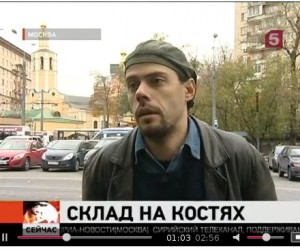 How do you interpret the diplomatic note which Georgia’s foreign ministry sent to Russia?
How do you interpret the diplomatic note which Georgia’s foreign ministry sent to Russia?
The funny thing is that this note could and would have been necessary and extremely useful just seven months ago when we were trying to put pressure on the Department of Cultural Heritage of Moscow to stop the construction work. Actually the Georgian Monuments Protection Department was informed about this situation not later than in October 2011, but did nothing to affect the situation. At least I never heard from them, despite the fact that one of their staff, Nikoloz Vacheishvili, back in October made big promises in interviews to Georgian national TV news programs.
And only now, in March when I informed them of previously achieved results, they started acting. As far as I understand, the Department readdressed the information to the Ministry of Foreign Affairs.
I can judge only by news reports by Radio Liberty and Georgian TV channels, but as far as I understand the news brought by media, the Ministry of Foreign Affairs asked Russia to stop the construction work, which was successfully stopped after I appealed to the Department of Cultural Heritage of Moscow and to the Georgian Catholicos-Patriarch back in September. Indeed, there is no guarantee that in the future another buildings will not appear on the soil of this cemetery which was destroyed in 1981, but as far as I understand, the Moscow Patriarchate ordered the staff of the Vsehsvyatskoe church to invite archaeologists and get permission from architects before making any reconstruction. And this differs the whole future situation from known previously, when the process had been run by the priest and his staff. Now it should be under the control and responsibility of the Moscow Patriarchate. So if Tbilisi wants to affect the process, I guess the negotiations would be more productive with authorities of Russian Orthodox Church.
Moreover it is very important to make the Ministry of Foreign Affairs of Georgia act in cooperation with the Georgian Orthodox Church, because otherwise, misunderstandings and disagreements may spoil the whole project we are trying to accomplish in Moscow.
Any unnecessary politicization or intervention of amateurs into this problem only distances us from successful accomplishment of the whole project -Georgiy Ramazashvili
Moreover, I want to mention that unfortunately, Russian and Georgian journalists demonstrated the lack of ability to understand all the complicated problems and details of the story. Journalists started replacing the facts, they were not able to grasp, with their fantasies and false interpretations. For example, Georgian TV programs announced in October and now in April that the staff of Vsehsvyatskoe church destroyed the old graves of the Bagration family in 2011. This is bad fantasy based on total misunderstanding, which only spoils our work. Yes, the tombstones were removed back in mid-2000s from graves of kniaz Ivan Aleksandrovitch Bagration and knyajna Anastasya Dmitrievna Bagration but without additional research we can not tell that the graves were destroyed in archaeological meaning. Also the statements that the priest destroyed wall paintings is also fantasy. At least I don’t have this information. I would ask Georgian and Russian journalists to be more precise with facts and act responsibly, unless they want to spoil the whole project. I am fed up with idiots who either publish frauds or calls me a “staff of Georgian special services” (this statement was available before being erased in livejournal of this church).
It is also important to understand that this problem of destruction of old cultural heritage is typical for modern Russia. According to statements of specialists and independent Russian organizations (Arhnadzor and VOOPIiK – Vserossiyskoe Obshestvo Ohrany Pamyatnikov Istorii i Kultury), almost half of the vandalisms and destructions of Russia’s cultural heritage is done by representatives of religious confessions, which is a sad phenomenon.
Indeed, in Vsehsvyatsoe’s case it would be very easy to explain everything by the political confrontation between Georgia and Russia, but actually this is the least important reason for the whole problem. I would rather say that the Georgian diaspora is also responsible for many years of ignorance about the whole situation. Had Georgians been more active in protecting our heritage, probably more samples of this historical Georgian-Russian necropolis could have survived.
I would also mention that according to studies we do with Russian historian-archivist Igor Tikhonov, the territory of the cemetery, where buildings appeared in 2011, was covered graves of ethnic Russians back in the first half of the twentieth century. So this is why there is no place for primitive national explanations. I am lucky enough to find allies not only in Georgia but also among Russian historians, representatives of Orthodox churches and activists for defense of cultural heritage.
On the other hand, judging by they livejournal, Vsehsvyatskoe church had been asked to collect a “religious aid” for the church of Russian troops which occupy South Ossetia: indeed, it is sad that a Russian church didn’t respect the ethnical aspect of Vsehsvyatskoe’s history. It is as sick as if I asked a synagogue to collect humanitarian aid for Wehrmaht troops. It is sad and insulting, but I can not even guarantee that in Moscow it was done deliberately to abuse Georgians.
http://hram-sokol.livejournal.com/313352.html
http://hram-sokol.livejournal.com/294776.html
 One last question: How big is the threat to the cemetery today, and is there a chance that the graves may one day be restored to their original condition?
One last question: How big is the threat to the cemetery today, and is there a chance that the graves may one day be restored to their original condition?
Well, as I mentioned, there is no functioning cemetery. What exists is a cemetery in the archaeological meaning. It doesn’t function at all in comparison to what any non-historian would consider a cemetery. So a lot of things depend on whether we will be able to achieve result like:
– to get a few tombstones back to their historical places,
– possible reconstruction of a few lost epitaphs which we know from old descriptions,
– further archaeological research under recent modern floor inside the church,
– and what I find necessary is to collect from the church’s metrical books all the accessible names of those people who were buried in Vsehsvyatskoe through the centuries. And there must be built a wall of memories where all these names with the dates of their death would be curved upon. But this project also needs serious financial and administrative support. Thus far we have neither.
As for possible excavation on the territory of the cemetery around the church, I don’t believe it will be possible in the nearest future. Maybe at local spots where and if the church plans to build something new.
Anyway the future of this project depends on correct and considered cooperation of different groups of professionals. Any unnecessary politicization or intervention of amateurs into this problem only distances us from successful accomplishment of the whole project.
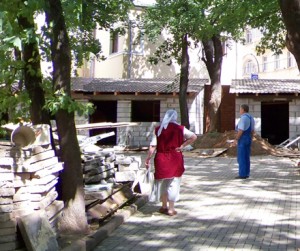

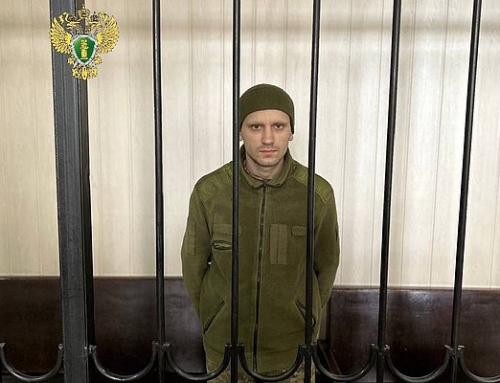

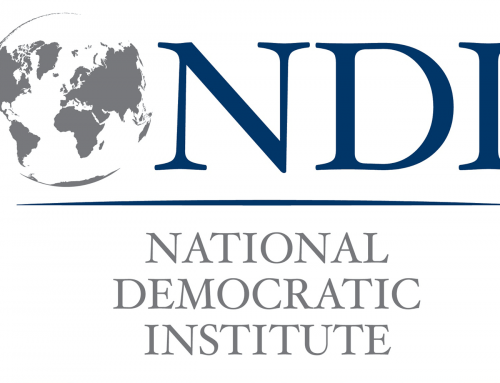
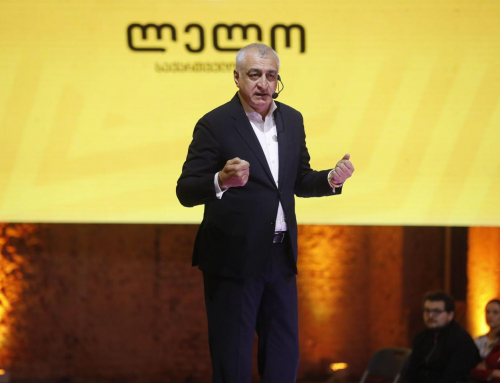
Leave A Comment
You must be logged in to post a comment.